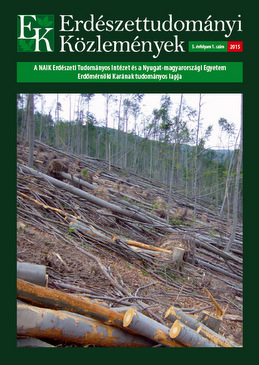Gap cutting and its effects on the understory vegetation in the pedunculate oak-hornbeam forests of Szatmár-Bereg Plain (NE Hungary)
Árpád Szalacsi, Szilvia Veres & Gergely Király
Correspondence
Correspondence: Szalacsi Árpád
Postal address: H-4032 Debrecen, Böszörményi út 138.
e-mail: Arpad.Szalacsi[at]nyirerdo.hu
Abstract
Lowland oak-hornbeam forests are one of the important sites of quality oak wood production. Consequently, this habitat has become a major conflict point between forest management and nature conservation in Hungary over the past 20 years. In order to develop a regeneration method based on natural processes, we tested the impacts of gap regeneration cuttings in three compartments in the Szatmár-Bereg Plain (NE Hungary). During the regeneration process, we found an insignificant number of invasive weeds in the gaps. Forest herbs were represented nearly uniformly in the gap parts variably exposed to the sun; the cover of native weed species was significantly higher in the central part of the gaps. Mixed tree species (especially hornbeam) have shown great vitality in the gaps. Thus, in order to ensure the natural regeneration of the pedunculate oak, protection against game damage and proper management are indispensable. Based on our observations, a recommended minimal starting gap size in lowland hornbeam-oak forests is 0.15 hectares. After they are created, further expansion of the gaps is necessary after 4-5 years. The final restoration subdivision (approx. 2 ha) can be reached in 2 steps within a span of 8-10 years. The forests created in this way are mixed and are of an appropriate vertical and horizontal structure.
Keywords: Great Hungarian Plain, pedunculate oak, natural regeneration, understory vegetation, nature conservation
Open Acces
For non-commercial purposes, let others distribute and copy the article, and include in a collective work, as long as they cite the author(s) and the journal, and provided they do not alter or modify the article.
Cite this article as:
Szalacsi, Á., Veres, Sz. & Király, G. (2015): Gap cutting and its effects on the understory vegetation in the pedunculate oak-hornbeam forests of Szatmár-Bereg Plain (NE Hungary). Bulletin of Forestry Science, 5(1): 85-99. (in Hungarian) DOI: 10.17164/EK.2015.006
Volume 5, Issue 1
Pages: 85-99
First published:
10 October 2015
Related content
7
More articles
by this authors
2
Related content in the Bulletin of Forestry Science*
More articles by this authors in the Bulletin of Forestry Science
* Automatically generated recommendations based on the occurrence of keywords given by authors in the titles and abstracts of other articles. For more detailed search please use the manual search.
